Myanmar (Burma) 2020
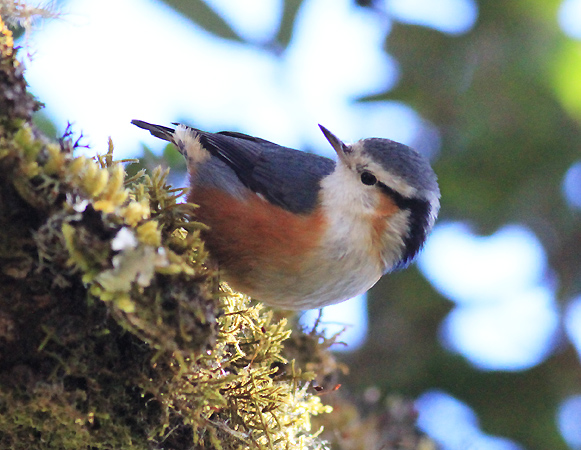 Myanmar (formerly known as Burma) has been one of the least visited countries in Southeast Asia for many years but changes within the country have meant that now is an excellent time to visit this friendly nation and enjoy its fantastic birds, including all of its endemic species and many near endemics, as well as some of its stunning cultural landmarks. Beginning in the former capital, Yangon, we start our birding in the plains before moving on to the ancient capital of Bagan and its profusion of spectacular temples where we will also be able to find four of Myanmar’s endemic species; White-throated Babbler, Hooded Treepie, Burmese Bushlark and Jerdon’s Minivet. We will enjoy birding from a boat along the Irrawaddy River before driving to one of the ornithological gems of this wonderful country – Mount Victoria. We will spend five whole days at this fantastic location exploring the different altitudes and habitats, giving ourselves the best chance to see more Burmese endemics and many regional endemic species as well as enjoying some wonderful scenery and forests. After traveling back to Bagan we will take a short flight to visit Kalaw, an old colonial hill station where we can enjoy some more forest birding with a quite different set of species to those seen at our previously visited sites. Our birding will conclude with a visit to the picturesque Inle Lake and the surrounding farmland where we will see a wide variety of open country and wetland species as well as some interesting culture before heading back to Yangon where the trip ends.
Myanmar (formerly known as Burma) has been one of the least visited countries in Southeast Asia for many years but changes within the country have meant that now is an excellent time to visit this friendly nation and enjoy its fantastic birds, including all of its endemic species and many near endemics, as well as some of its stunning cultural landmarks. Beginning in the former capital, Yangon, we start our birding in the plains before moving on to the ancient capital of Bagan and its profusion of spectacular temples where we will also be able to find four of Myanmar’s endemic species; White-throated Babbler, Hooded Treepie, Burmese Bushlark and Jerdon’s Minivet. We will enjoy birding from a boat along the Irrawaddy River before driving to one of the ornithological gems of this wonderful country – Mount Victoria. We will spend five whole days at this fantastic location exploring the different altitudes and habitats, giving ourselves the best chance to see more Burmese endemics and many regional endemic species as well as enjoying some wonderful scenery and forests. After traveling back to Bagan we will take a short flight to visit Kalaw, an old colonial hill station where we can enjoy some more forest birding with a quite different set of species to those seen at our previously visited sites. Our birding will conclude with a visit to the picturesque Inle Lake and the surrounding farmland where we will see a wide variety of open country and wetland species as well as some interesting culture before heading back to Yangon where the trip ends.
|
|
Upon arrival in the morning you will be transferred to a nearby hotel. In the afternoon/evening there will be an optional visit to the awesome Shwedagon Pagoda where interred Buddha relics make this one of the most revered holy sites in Myanmar. In the gardens we may be able to spot some of the commoner birds; certainly we will not be able to miss the unusually abundant House Crows. Night in Yangon.
After a good night’s rest we will get our first introduction into the birds of Myanmar with an early morning drive to the nearby Hlawga Wildlife Park, an area of dry open woodland, grassland, secondary growth and scrubland, where our main targets will be our first Burmese endemics the recently split Ayeyawady Bulbul and Davison’s Bulbul which we should be able to see in the scrubby farmland outside the park at sunrise. This site is a good place to see a large number of the country’s commoner species such as Black-naped Oriole, White-rumped Shama, Red-vented Bulbul, Black-crested Bulbul, White-throated Kingfisher, Indian Roller, Coppermsith Barbet, Plaintive Cuckoo, Green Bee-eater, Common Iora and perhaps Racket-tailed Treepie. While much of the habitat is woodland there will also be the chance to see some waterbirds with our first views of Asian Openbill, Oriental Darter, Lesser Whistling Duck and perhaps a Bronze-winged Jacana or two. We should also be able to see a few raptors here too as the day warms up with Western Osprey, Shikra, Black-eared Kite, Oriental Honey-buzzard all likely with the possibility of a handsome Black Baza putting in an appearance. There will also be the opportunity to test our identification skills with some warblers such as Thick-billed Warbler, Yellow-browed Warbler, Dusky Warbler and Two-barred Warbler. If we are very lucky we could find Pale-capped Pigeon which is sometimes seen here.
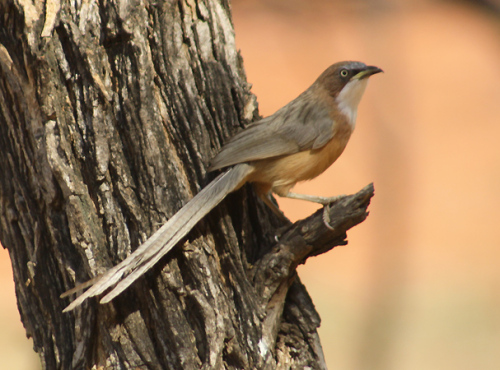 |
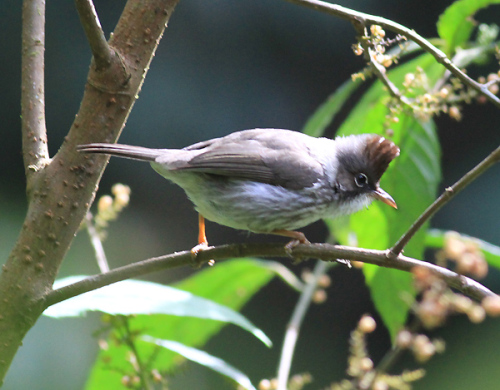 |
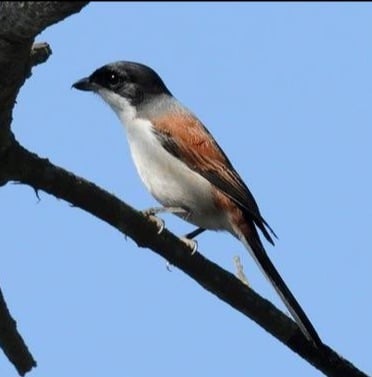 |
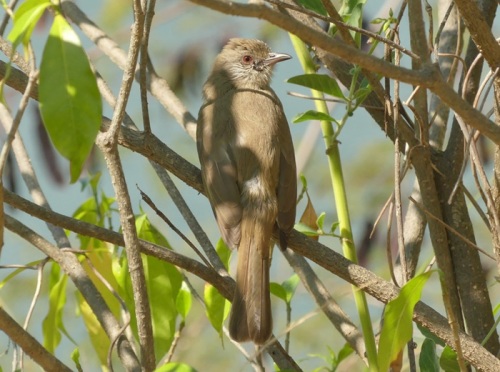 |
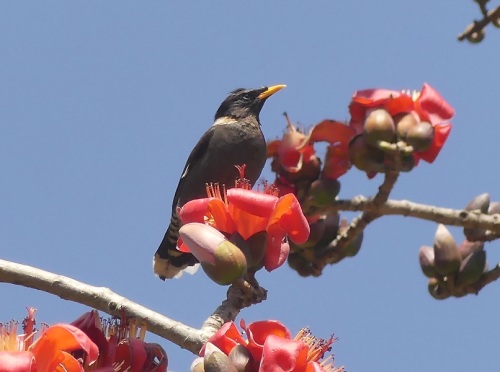 |
 |
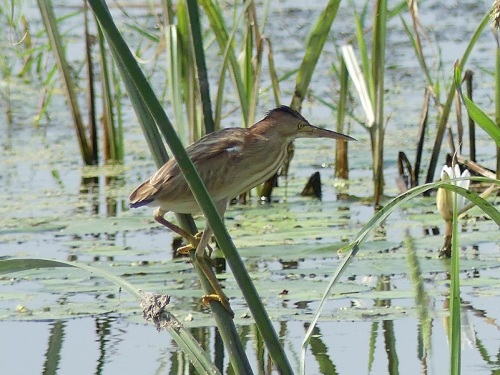 |
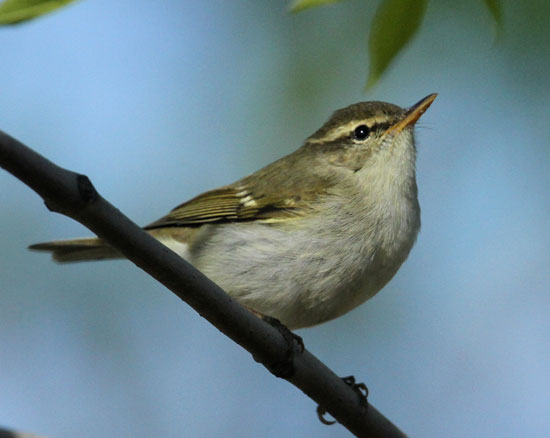 |
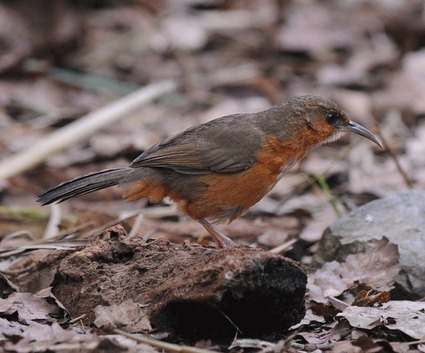 |
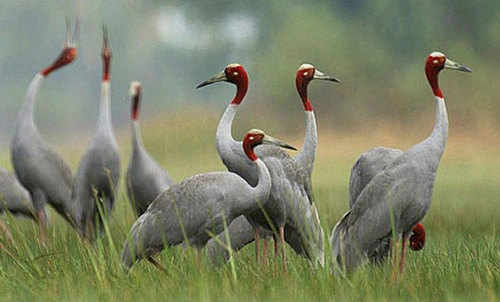 |
 |
After lunch at the lakeside we will head back towards Yangon airport for an afternoon flight to Bagan where we will transfer to our hotel and have dinner in a nice restaurant. Overnight in Bagan.
Days 3 - 4 Bagan
After an early breakfast we can spend the first hours of sunlight birding in and around this spectacular area littered with ancient temples and it is here that we expect to encounter our first Burmese endemics; Burmese Bushlark, Burmese Collared Dove and White-throated Babbler, all of which are common and will offer us great views over the course of the two days and there will be plenty more encounters with Ayeyarwady Bulbul too. In the plains of Bagan around 4000 temples and stupas dating from 11th, 12th and 13th centuries are situated and the site rivals Angkor in Cambodia as an historic attraction. At the time of year we will visit the visibility should be excellent for enjoying views of these ruins as well as the birds that we will find within this site. Visiting the temples puts us within scattered dry woodland, farmland and scrub where some of central Myanmar’s target species occur including the endemic Jerdon’s Minivet, a real gem when we see it, and the shy Hooded Treepie but it should be noted that these two highlight species can be hard to locate and are the reason for spending a couple of days on-site. Of course, while we will be targeting the four endemics there will be lots of other interesting species to look for including Laggar Falcon, Tickell’s Leaf Warbler, Burmese Shrike, Yellow-streaked Warbler, Brown Prinia, Freckle-breasted Woodpecker, Rain Quail and Spotted Owlet.
A feature of one of our days at Bagan will be an afternoon boat trip along the Ayeyarwady river, always a pleasant change of pace on a birding tour, to enjoy wetland species which should include the colourful Ruddy Shelduck, Indian Spot-billed Duck, elegant Pied Kingfisher, large numbers of Plain Martins as well as River Lapwing and a few waders such as Little Ringed Plover, Kentish Plover and Common Greenshank. Our destination will be some beaches and riverine vegetation where we should be able to find Sand Lark and some beautiful White-tailed Stonechats while finding a party of Striated Babblers will be a little trickier they should be detected in the long grasses. Plenty of other open-country birds will be here too including Oriental Skylark, Red Avadavat, Zitting Cisticola and perhaps an Eastern Marsh Harrier or Pied Harrier hunting for prey. The return journey along the river at sunset is a nice way to relax before dinner in Bagan.
Spending two days at Bagan will give us time to ensure we find all the endemics and difficult to see species as well as the outstanding temples. If we have not already seen them we will be able to look for Long-billed Pipit, the stunning Siberian Rubythroat, the endemic subspecies of Vinous-breasted Myna, Yellow-eyed Babbler, Indian Nightjar, Brown Shrike and Plain-backed Sparrow, a bird that requires a better name to reflect the quality of its colourful plumage. Overnights at Bagan
Day 5 Bagan - Mount Victoria
Leaving Bagan early we will begin our journey to Mount Victoria, but there will be a few birding stops along the way for species typical of dry woodland including Grey-headed Parakeet, Common Woodshrike, Grey-capped Pygmy Woodpecker, Small Minivet, Red-billed Blue Magpie as well as White-eyed Buzzard. It is here that we will also look for White-rumped Falcon, a scarce bird but one that we will put in some effort for. The journey will take us through lots of dry country and forest and provide an insight into Myanmar’s rural life.
The middle of the day will be used for driving and we aim to get to our accommodation at the lower slopes of Mount Victoria in time for late afternoon birding so that we can target a really top quality bird in Chin Hills Wren Babbler. The landscape and the temperature will be very different to anything we have been birding in up until now, with cool air in the mornings and afternoons and our first birding will be done around forest patches and rough farmland where we can find quite a few species that we might not see so easily elsewhere on the mountain. Perhaps we can find the skulking Rusty-fronted Fulvetta, maybe Streak-breasted Scimitar Babbler but certainly there are plenty of commoner birds we should encounter on our first afternoon such as Green-backed Tit, Olive-backed Pipit, Stripe-breasted Woodpecker, Long-tailed Shrike, Grey Bushchat, Russet Sparrow, Silver-eared Mesia and we will try for the skulking Brownish-flanked Bush Warbler. Last time we were here we found the first Song Thrush for Southeast Asia! Overnight at Mountain Oasis Resort.
Days 6 - 9 Mount Victoria
We will be birding for four full days at Mt. Victoria (Natmataung National Park), the site which is a major focal point of this tour, giving us plenty of time to enjoy the various altitudes and habitats and the variety of birds these provide. This mountain plays host to many Himalayan species, several regional endemics as well as White-browed Nuthatch and Burmese Bushtit; both endemic to only Myanmar. As we travel up the mountain we pass through a variety of habitats all with their own ecology and avifauna from pine and deciduous forest in the foothills to evergreen forest near the summit we anticipate a huge range of birds. In the lower elevations we will target birds such as the surprisingly handsome Striped Laughingthrush, Crested Finchbill, Crimson-faced Liocichla, Nepal Fulvetta, Grey-hooded Warbler, Mrs Gould’s Sunbird, Spot-winged Grosbeak, Black-throated Bushtit, Grey Treepie, Streak-breasted Scimitar Babbler, Blyth’s Shrike Babbler and, at night, Hodgson’s Frogmouth.
In the mid altitude pine forests the scenery is beautiful and the birding very rewarding with species including Black-throated Prinia, Rufous-bellied Woodpecker, Streak-throated Barwing, Darjeeling Woodpecker, Spot-breasted Parrotbill, Buff-throated Warbler, Bar-tailed Treecreeper, Yellow-breasted Greenfinch, the stunning Assam Laughingthrush, Black-bibbed Tit, Aberrant Bush Warbler and Mount Victoria Babax which is a probable split from Chinese Babax.
The highest elevations are characterized by moist, mossy forest and a community of birdlife almost completely different to other elevations. A mouth-watering list of species await us with colourful parties of Minlas including Chestnut-tailed, Blue-winged and Red-tailed Minlas feeding together, Rusty-fronted Barwing, super-abundant Grey Sibias, Buff-barred Leaf Warbler, Yellow-bellied Flowerpecker, Green Shrike Babbler, Chestnut-headed Tesia, Burmese Tit, Striated Bulbul, Grey-sided Thrush and, of course, the star of the show, White-browed Nuthatch. Scaly-breasted Wren Babbler will probably give us some trouble but this little tiny bird with a big voice will be worth it. The list of species to look for is almost endless so there will be plenty to keep us busy. Overnights at Mountain Oasis Resort.
Day 10 Mt Victoria - Bagan
The day will be spent traveling back to Bagan but we will be sure to make a number of birding stops along the way to look for species that we may have not seen on the journey in or just simply to enjoy some of the birds previously seen again; exactly where we stop and what we will look for depends on which species we wish to see again or have better views of. Overnight in Hotel in Bagan.
Days 11 - 12 Kalaw
Flying to Heho from Bagan in the morning we will drive to the hill station of Kalaw, stopping in surrounding farmland where we hope to find Collared Mynas alongside the commoner Vinous-breasted Starlings and perhaps Black-collared Starling. This pleasant little town, developed around an old colonial hill station provides us with some lovely scenery where we will spend the next two days exploring the forested mountains for a wide variety of species typical of the Eastern Himalayas with the near endemic Burmese Yuhina high on our target list. Birds such as Rusty-cheeked Scimitar Babbler, Silver-eared Mesia, White-browed Laughingthrush and White-browed Scimitar Babbler will be memorable while winter visitors should include the colourful Daurian Redstart, Grey-backed Shrike, Black-headed Greenfinch and Claudia’s Leaf Warbler but shy birds such as White-crowned Forktail, Vivid Niltava and Black-tailed Crake will be found by using local knowledge.
The scenery in this area is very attractive, being a mix of pine woodland and farmland and bird abundance is good with other species including Red-billed Blue Magpie, Eurasian (White-faced) Jay, Brown-breasted Bulbul, Black Bulbul, Buff-throated Warbler, Dark-backed Sibia, Eastern Buzzard and Russet Sparrow. Overnights at a hotel in Kalaw.
Day 13 Kalaw - Inle Lake
We will drive the short distance to Nyaung Shwe where will embark for a boat trip on Inle Lake, the second largest lake in Myanmar. At this location we can see a large variety of wetland and open country birds including Indian Spotbilled Duck, Ferruginous Pochard, Pheasant-tailed Jacana, Bronze-winged Jacana and Yellow Bittern to name a few. There could also be a few surprises with perhaps a rarity such as Baer’s Pochard or Sarus Crane. One of our main targets here is Jerdon’s Bushchat which is scarce and declining across much of its range but we should be able to see them here as they are abundant in a few areas.
A number of interesting passerines can be found here as well as waterbirds; Indian Reed Warbler, Bluethroat, Black-browed Reed Warbler, Striated Grassbird and Yellow-bellied Prinia should all be seen and we may be able to find Yellow-breasted Bunting now listed as an endangered species following a huge decline in its population. Raptors can be seen here too including both Eastern and Western Marsh Harriers and in the evening Collared Myna is the target as it gathers with other mynas before roosting. Cotton Pygmy Goose, Black-shouldered Kite, Wire-tailed Swallow, Streaked Weaver and Lesser Coucal may also be found and we will stay right next to a breeding colony of Asian Openbills and Glossy Ibis. Overnight at hotel on Inle Lake.
Day 14 Inle Lake - Yangon
The morning will give us another chance to go birding on Inle Lake to look for those tricky species that have so far eluded us; Chinese Grassbird would be a lovely species to finish with but will take some finding and a little luck although with some persistence we should be able to tease out a Baikal Bush Warbler. After birding we will drive back to Heho for our flight back to Yangon where we will spend our last night together. Hotel in Yangon.
Day 15 Departure - End of Tour - 6th February
Morning transfer to the airport for our return international flights back to the UK/Europe and conclusion of a very memorable tour. Or continue with the Jerdon’s Babbler extension.
Days 15 - 16 Yangon to Paya Hton Camp – 6th to 7th February
After an early breakfast we will take a four hour drive to a reliable site for the recently rediscovered altirostre subspecies of Jerdon’s Babbler. This subspecies was only rediscovered in 2015 having remained unseen since 1941 and being considered extinct and this extension is arranged purely to observe this resurrected taxon, something very few living birders have experienced. Due to the scarcity of its preferred habitat this bird only hangs on in a few small scraps of habitat in the plains West of Yangon and considering that this population has been separated from the other subspecies by geographical features for a very long time it is a highly likely candidate for elevation to full species level. This is a little bit of an adventure to an area that receives very few foreign visitors so that facilities are simple but clean and food is authentic to the region. We will have a few birding stops in the morning and all afternoon on day 16 as well as a full morning of day 17 birding on site for the endemic subspecies of Jerdon’s Babbler which we should be able to find in the grassy areas of vegetation which remain here; this will be a rare opportunity to see this little-known bird. This is also a good site for other open country species with an encounter with the increasingly rare Sarus Crane highly likely and there is also the possibility of finding the critically endangered Yellow-breasted Bunting while commoner birds should include Stejneger’s Stonechat, Plain Prinia, Brown Shrike, Great Egret, Streaked Weaver, Asian Golden Weaver, Yellow Bittern, Chestnut Munia, Chestnut-tailed Starling and many others including, perhaps, Painted Stork.
After lunch (7th Feb) we will drive back to Yangon, heading directly to the airport for those who have evening flights home or drop off at a hotel for those staying the night in Yangon. Overnight on 6th at Soe Theik Pan guest house in Wakema.
Leaders: Nick Upton and local guides
Ground Price (Main Tour): £3475.00 - Yangon/Yangon
Ground Price (Extension): £285.00 - Yangon/Yangon
Airfare: £650.00 - £750.00 (Approx) - UK/UK
Single supplement: £475.00
Single Supplement (ext): £25
Deposit: £500.00
Group size (Extension): Minimum for tour to go ahead 4 and maximum 8 with 1/2 leaders.
Included in cost: Accommodation in twin en-suite rooms, all meals, bottled water, all ground transport including domestic flights and overland transport, all park entrance fees, and services of leaders.
There is lengthy travel for the extension which culminates with a ride on the back of a motorcycle of if road conditions are poor, a hike. Weather on the extension is expected to be hot and humid.
BOOK THIS TOUR |
Myanmar Tour Report - 2018
Receive our e-newsletter:
Join the Zoothera e-mailing list for up-to-date news on new tours, tour reports and special offers.
e-mail [email protected] to sign up.
